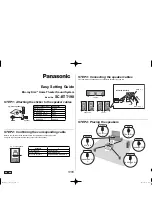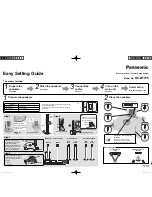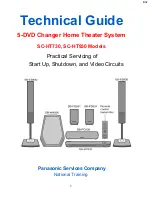
The key components in the solar water heating
system include the solar collector, solar
storage tank with integral heat exchanger,
circulation pump, differential thermostat,
expansion tank, pressure gauge, mixing valve
and the non-toxic propylene glycol heat
transfer fluid (HTF).
The solar collector is the heart of the system.
Simply stated, when the sun is shinning, heat
energy is absorbed by the solar collector’s all
copper absorber plate and tranferred to the
HTF circulating through the solar collector.
The system pump efficiently circulates this
heated fluid through the collector piping and
integral tank heat exchanger. As the HTF
passes through the heat exchanger the heat in
the fluid is transferred by conduction to the
potable water in your solar storage tank. As
this process is continuously repeated during
the average sunny day the temperature in your
solar storage tank rises.
When the solar collector absorber plate is
approximately sixteen degrees hotter than the
temperature in the bottom of your solar storage
tank, the controller will turn the circulating
pump on. When the temperature difference has
been reduced to eight degrees, the controller
automatically turns the pump off.
Both single and double tank systems are
designed to provide three separate modes
of system operation. The system will, (1)
accommodate 100% solar operation, (2) serve
as a preheater to your solar storage tank or
back-up water heater, or (3) bypass the solar
collector and run 100% on utility power.
Section Six provides instructions for setting
the system for automatic operation in each of
these three modes.
The Dowfrost HD HTF protects your solar
system against freezing. Dowfrost HD
can provide reliable freeze protection at
temperatures as low as minus 60° Fahrenheit
if properly applied and maintained. Use of
uninhibited propylene glycol, plain water or a
concentration of these two fluids as the HTF in
this system is strictly prohibited.
Propylene glycol can degrade over time.
The process of degradation is accelerated in
presence of oxygen and/or heat. We strongly
encourage you to establish a preventative
maintenance schedule with your installation
contractor. The HTF pH level must be
maintained between 8 and 10 in order to
prevent glycol oxidation and corrosion of the
collector piping. Manufacturer’s collector
warranty specifically excludes freeze damage
for any reason and absorber plate damage
resulting from the oxidation of the propylene
glycol HTF.
In order to completely protect the integrity of
the solar collector and piping, the system is
designed to be drained manually if subject to
extended periods of disuse or persistent hard
freeze conditions below minus 60° Fahrenheit.
(See Summer Vacation Recommendations and
Procedures Section).
Installation Requirements - General
The contractor shall obtain all required permits
and approvals.
The installation shall conform to all federal,
state and local regulations, codes, ordinances
and standards governing solar water heating
system installations, and the contractor shall
adhere to sound building safety and trade
practices. Special consideration must be
given to building code requirements for the
penetration of structural members and fire
rated assemblies.
The solar collector must be located in a
structurally sound area of the roof that will be
unshaded for the majority of the day all year
round. Adjacent buildings and trees should
be checked for possible winter shading. An
instrument such as the Pathfinder can be used
for solar site analysis.
Before the installation the contractor shall
inspect the condition of the roof and notify the
homeowner of any existing roof damage or
necessary repairs.
9
System Decription and Operational Principle










































